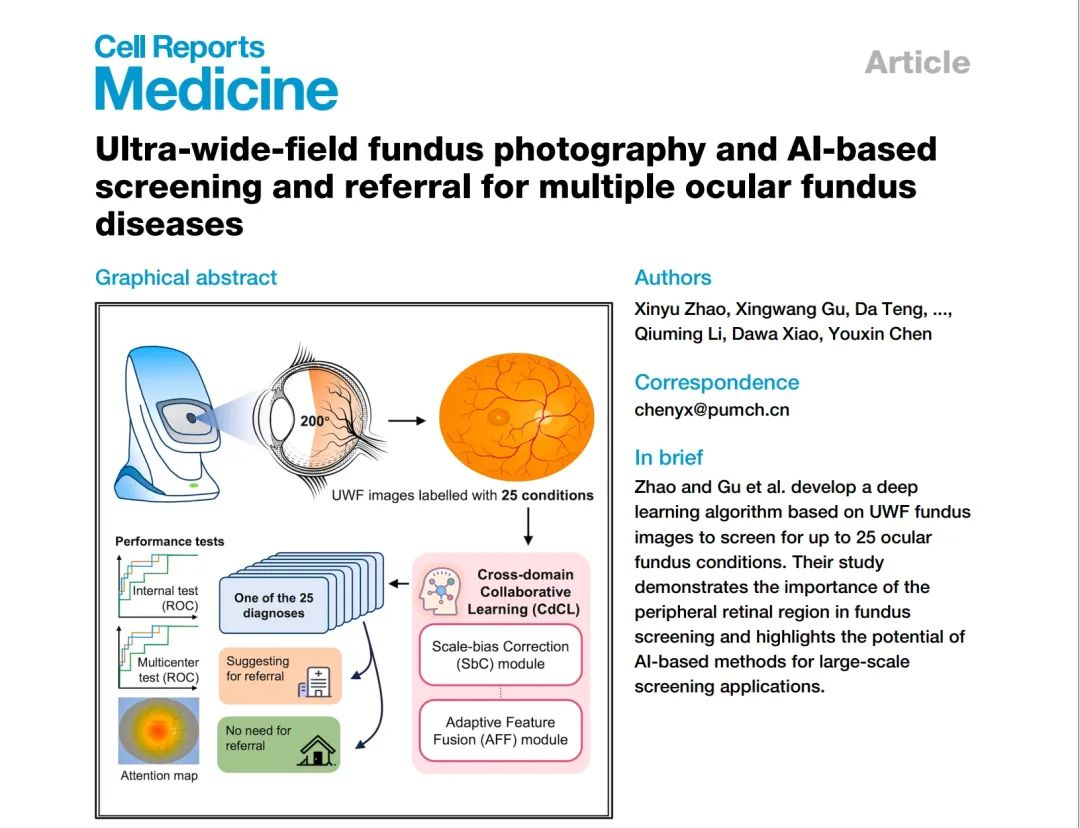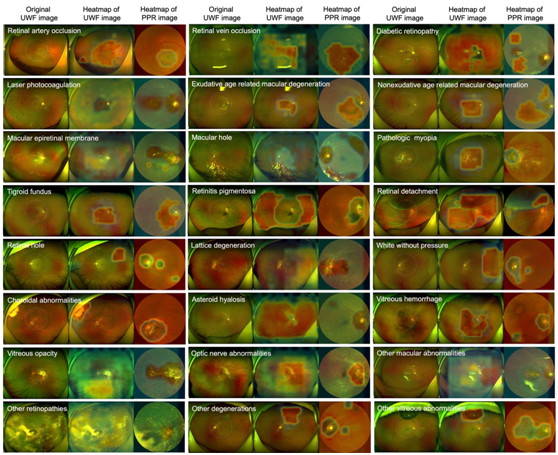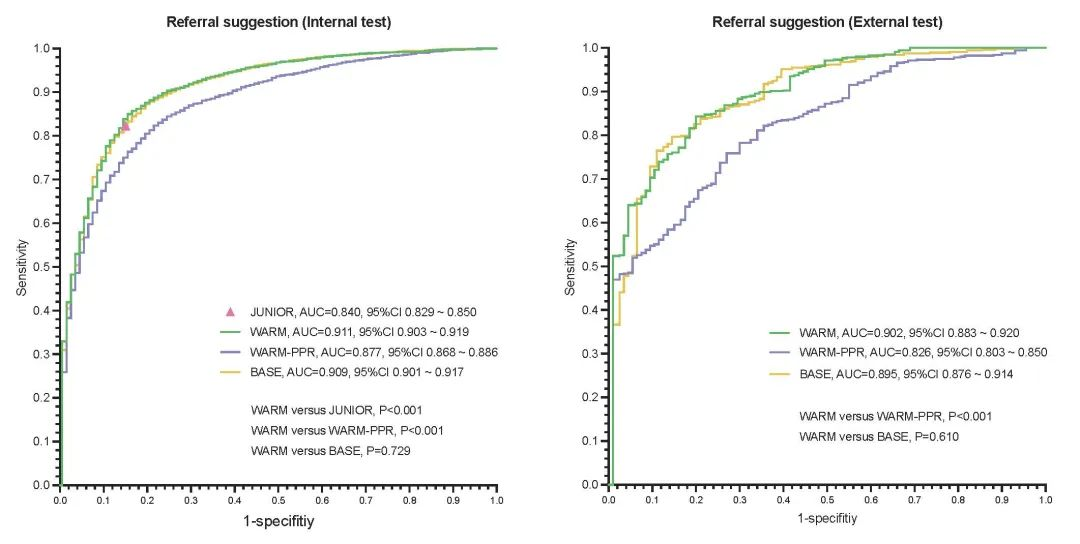A cross-institutional research team led by Dr. Chen Youxin, Chief Physician of the Department of Ophthalmology at PUMCH, has successfully developed the AI-powered WARM system based on ultra-wide-field (UWF) fundus imaging and deep learning technology. This system can identify up to 25 fundus conditions and generate referral suggestions, providing a new pathway for ocular fundus disease (OFD) screening and grading-based care. Recently, the research findings were published in Cell Reports Medicine, a journal from Cell Press.

The fundus is a window into not only visual health but also systemic health. Irreversible visual impairment caused by OFDs has become a leading cause of blindness worldwide. As the population ages and diseases become more complex, the shortage and uneven distribution of retinal specialists has grown increasingly severe, hampering effective implementation of early screening, diagnosis, and treatment strategies for OFDs.
Traditional fundus cameras can only capture approximately 15% of the retinal area, posing significant risks of missing peripheral lesions. UWF imaging can photograph much broader retinal regions, covering approximately 82% of the retinal area. This advanced imaging approach provides an optimal data foundation for AI model training.
Chen Youxin's team collaborated with 26 tertiary medical institutions nationwide to build a large-scale, high-quality dataset containing approximately 60,000 UWF images. Using Swin Transformer as the backbone model, the team then implemented the original Cross-domain Collaborative Learning (CdCL) approach to develop three deep learning algorithms: the Wide-field Artificial intelligence Recognition of Multi-diseases model (WARM); the baseline model (BASE), and the model that combined with the cropped posterior pole region (PPR) of the UWF images (WARM-PPR).

▲Illustration of the overall study design and procedures
The model accurately identifies up to 25 fundus conditions, including normal fundus and OFDs including diabetic retinopathy and retinal detachment. It enables intelligent grading of lesions and accordingly proposes referral suggestions based on lesion characteristics, simulating clinical screening workflows. Notably, the WARM model significantly outperforms the WARM-PPR model, which is confined to the posterior pole region (PPR), in identifying peripheral and diffuse lesions, demonstrating that full-field imaging is clinically essential for comprehensive fundus screening.

▲Representative saliency heatmaps of 24 fundus abnormalities generated by WARM with UWF and WARM-PPR for the posterior pole area (PPR); WARM performed better than WARM-PPR in identifying peripheral lesions
Rigorous multi-center validation demonstrated the excellent screening performance of WARM. Comparative studies with junior ophthalmologists showed that while manual interpretation achieved high specificity (0.982), sensitivity was only 0.583. The WARM model achieved better balance with sensitivity being 0.882 and specificity 0.846. The model particularly excelled at identifying subtle lesions and assessing complex pathologies, positioning it well for fundus disease screening.
This nationwide multi-center real-world study validated the model as a scalable AI-assisted screening system. Future integration with mobile screening units and 5G telemedicine platforms will enable WARM to help effectively overcome medical resource shortages in remote areas, optimizing the entire screening-diagnosis-intervention chain and providing crucial technical support for the National Eye Health Plan for the 14th Five-year Plan Period.

▲The accuracy of referral suggestions by the WARM model exceeds that of WARM-PPR, BASE, and junior ophthalmologists
The first author is Dr. Zhao Xinyu, attending physician in the Department of Ophthalmology at PUMCH, and the co-first author is Gu Xingwang, a 2024 doctoral student in ophthalmology at PUMCH.
